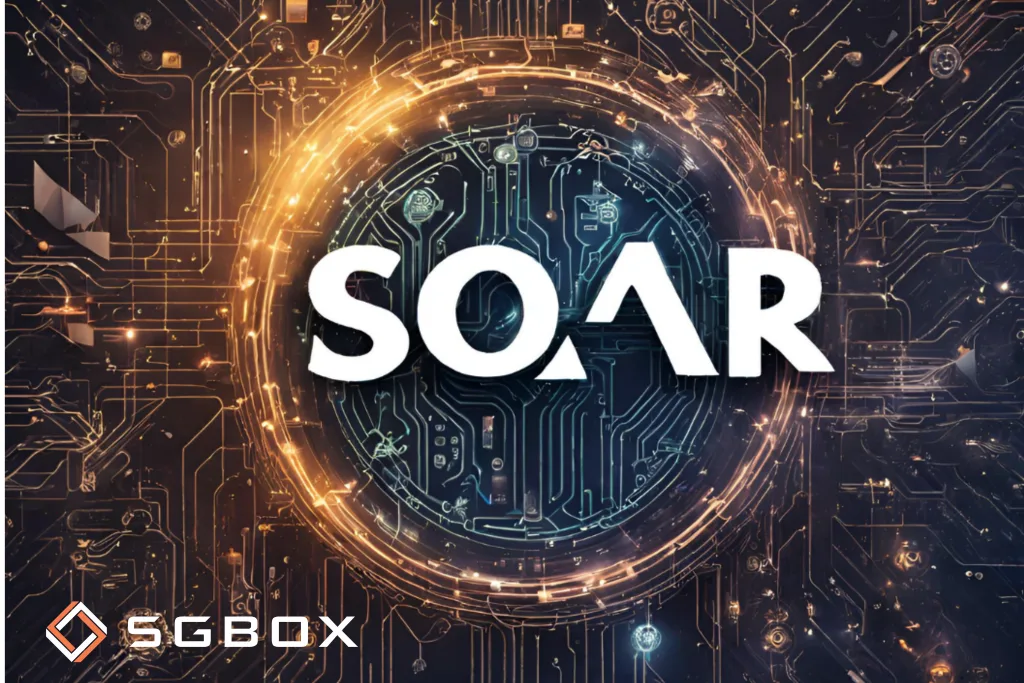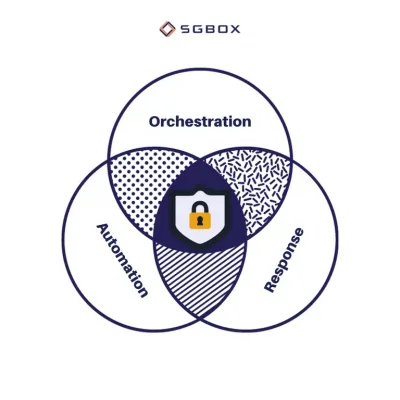What is SOAR? (Security Orchestration Automation and Response)

The world of cybersecurity is in constant evolution, and the implementation of advanced solutions is becoming increasingly crucial.
In this context, Security Orchestration Automation and Response (SOAR) emerges as a strategic answer to the ever-growing challenges of cybersecurity.
In this article, we will delve into the features and functionalities of SOAR, along with the advantages of its application in corporate security.
Definition of SOAR
SOAR, an acronym for Security Orchestration Automation and Response, represents a methodology and a set of tools designed to enhance the management of security incidents.
Simply put, SOAR integrates and automates security processes, enabling a faster and more effective response to cyber threats.
What are the 3 key elements of security orchestration automation and response SOAR?
SOAR relies on three fundamental pillars: Orchestration, Automation, and Response.
Orchestration involves the coordinated management of all resources involved in responding to an incident, ensuring optimal synergy between systems and security teams.
Automation aims to automatically execute repetitive and routine tasks, allowing analysts to focus on more complex and strategic activities.
Response involves the application of corrective and preventive actions to mitigate the effects of a security incident.

What Does Orchestration Mean in SOAR?
In the context of SOAR, orchestration refers to the synchronization and management of various technologies and processes involved in cybersecurity.
The ability to orchestrate enables an effective and well-coordinated response to security events, reducing resolution time and minimizing the impact on IT infrastructures.
What Does Automation Mean in SOAR?
Automation in SOAR is key to improving operational efficiency. Repetitive and tedious processes are automated, allowing analysts to focus on more complex tasks.
Automation reduces the risk of human errors and speeds up incident response, helping to keep the IT environment secure.
Difference between Automation and Orchestration
The distinction between Automation and Orchestration in the context of SOAR is crucial. Automation deals with the automatic execution of specific tasks, while Orchestration manages the sequence and collaboration of these tasks.
Together, they provide an integrated and synergistic approach to incident management.
Benefits of SOAR
Implementing Security Orchestration Automation and Response (SOAR) offers several significant advantages for business protection.
- Reduced Response Times: SOAR enables a quicker response to security incidents, reducing detection and resolution times.
- Optimization of Human Resources: Automation of repetitive tasks frees up personnel from manual activities, allowing them to focus on more complex and strategic tasks.
- Minimized Human Errors: Automation reduces the risk of human errors, improving the accuracy and reliability of security activities.
- Effective Incident Management: SOAR provides a centralized approach to incident management, allowing a clear and coordinated view of all response activities.
- Improved Security System Resilience: With its orchestration and automation capabilities, SOAR contributes to strengthening the overall resilience of the corporate IT security system.
- Optimal Resource Integration: Orchestration in SOAR facilitates collaboration and synchronization between different technologies and processes, ensuring optimal use of available resources.
- Advanced Analysis and Reporting: SOAR provides advanced tools for incident analysis and report generation, offering an in-depth view of threats and response actions.
What are the challenges of SOAR?
While SOAR (Security Orchestration Automation and Response) offers significant benefits in enhancing security operations, there are several key challenges that organizations face when adopting and implementing SOAR solutions:
- Complexity of Integration
Integrating SOAR with an organization’s existing security infrastructure can be a complex and time-consuming process. SOAR platforms need to connect with a wide range of security tools, systems, and data sources, which requires significant upfront effort to configure and maintain the integrations.
- Customization Requirements
Developing and maintaining the playbooks, workflows, and automations within a SOAR platform requires continuous effort and specialized expertise. Security teams need to invest significant time and resources to customize the SOAR system to fit their specific security processes and requirements.
- Scalability concerns
As an organization’s security needs grow in size and complexity, ensuring the SOAR platform can scale accordingly can be a challenge. Scaling SOAR to handle increasing volumes of security data, alerts, and response actions requires careful planning and ongoing optimization.
- Dependency on Skilled Personnel
Effective SOAR implementation and operation relies heavily on having experienced security professionals who understand the organization’s security workflows and processes. Without this domain expertise, the benefits of SOAR may not be fully realized.
- Potential Overreliance on Automation
There is a risk of overvaluing the automation capabilities of SOAR and underestimating the importance of human analysts. Over-automating security processes can lead to a false sense of security, as SOAR may fail silently, and critical incidents may be missed.
- Potential for Increased Complexity
While SOAR aims to simplify security operations, the introduction of a new platform can also add complexity to an organization’s security ecosystem. Integrating SOAR with existing tools and processes requires careful planning and management to avoid creating new silos or introducing additional points of failure.
To address these challenges, organizations should approach SOAR adoption with a clear understanding of their security maturity, processes, and personnel capabilities. A well-planned and phased implementation, along with ongoing optimization and training, can help organizations maximize the benefits of SOAR while mitigating the potential risks and challenges.
SGBox SOAR Advantages for Businesses
Orchestration and Automation functionalities are integral elements contributing to the effectiveness of SGBox platform modules. The platform can be easily adapted within existing security systems, thanks to the modularity and scalability of functions.
With SGBox SOAR, it’s possible to easily coordinate and manage all corporate security activities through intelligent automations in a single tool.
This is crucial for reducing reaction time to an attack and preventing future incidents. Another favorable aspect for corporate security activities is the ability to optimize security-related workflow and support the Security Operation Center (SOC) in incident response.
Discover SGBox SOAR>>
FAQs (Frequently asked questions)
In the realm of Security Orchestration, the primary function is to ensure the synchronization and optimal management of various technologies and processes involved in cybersecurity. This enables a cohesive and well-coordinated response to security events, reducing resolution time and minimizing the impact on IT environments.
Automation within SOAR plays a crucial role in reducing the risk of human errors. By automating repetitive and error-prone tasks, SOAR not only enhances the accuracy of security activities but also liberates personnel from manual tasks, allowing them to focus on more complex and strategic responsibilities.
The implementation of SOAR provides a range of advantages, including reduced incident response times, optimization of human resources through automation, minimization of human errors, a centralized approach to incident management, enhancement of security system resilience, and improved integration of available resources.




